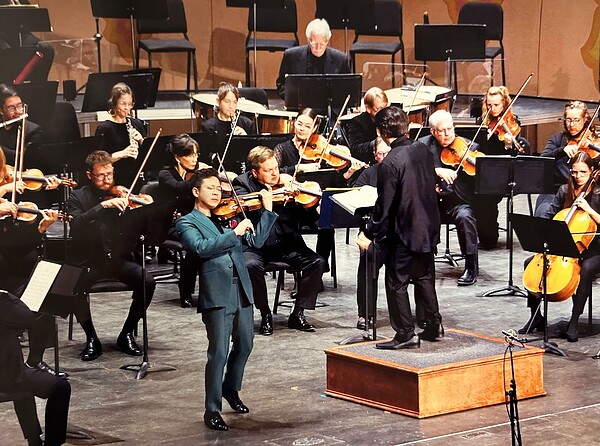Press
Review
KSO Brings Back Paul Huang For a Spectacular Tchaikovsky Concerto

It did not require a seer or soothsayer to predict what would happen at the end of the first movement of the Tchaikovsky Violin Concerto at this past weekend’s Knoxville Symphony Orchestra Masterworks concert. Given violinist Paul Huang’s flight of speed, dazzling technique, and breathtaking virtuosic storytelling, it was practically inevitable that the ending would yank the audience out of their seat for a performance-stopping, extended ovation that included cheers and a few bravos. Despite my fears that some audience members may have thought the concerto was over, one must admit that the Allegro moderato coda will send the audience into a quasi-rapturous state almost every time.
Huang, making his third appearance as a soloist with the KSO since 2017, is a master at making intricacy and precision sound commonplace. Although assisted by the 1742 “ex-Wieniawski” Guarneri del Gesù violin on extended loan to him, what one hears is Huang the storyteller. If anything, his KSO visits have revealed an increasing depth of maturity in which he fully commands the narrative. Not only are the storyteller’s periods, commas, and exclamation points in place, but complex plots and descriptions have been filled with subtle meanings. One had only to experience the first movement cadenza to grasp this mastery. Turning the corner coming out of that cadenza, Maestro Aram Demirjian created a gorgeously transcendent moment with a gentleness—led by KSO principal flute Devan Jaquez—that was achingly beautiful.
Huang, Demirjian, and the orchestra maintained a position of half mystery/half serenity in the second movement—a Canzonetta: Andante. The soloist contrasted against melancholy woodwinds was beautifully wistful. Similarly, the attention to detail carried over into the Finale movement, although it is that breathless accelerating pace and explosion of sound that infuses the movement with its energy. Again, pulled from their seats by the climax, a standing ovation was practically mandatory for this excellent performance.
Although Demirjian reminded the audience in his comments that it had been 15 years or so since the orchestra’s last performance of Brahms Symphony No. 3, it felt as if one was visiting an old and dear friend. Interesting, too, the symphony has an autumn-like sense of volatility pared down by wistfulness—perhaps a hint of melancholy, but more clearly a warmth, a tension, and a vitality that just feels like warm sun and crisp shade amid falling leaves.
Demirjian guided the performance within a fairly wide range of kinetic and dynamic boundaries, the work’s delightful rhythm and tempo energies fully finessed. Despite the symphony’s apparent weight, agility was the key in punctuating and expressing its Romantic themes. The previously mentioned wistfulness was at home in the Andante movement where the KSO woodwinds did a masterful job of self-balancing and feeding off one another—clarinet Gary Sperl, oboe Claire Chenette, bassoon Ryan Yamashiro, flute Devan Jaquez. The horn solo by Jeffery Whaley in the third movement, Poco Allegretto, was simply spectacular. The Allegro finale, dramatic and insistent, ebbed and flowed, finally offering a thematic reminder as the movement surges triumphantly.
Demirjian opened the concert with Samuel Coleridge-Taylor’s Ballade in A minor, Op. 33 from 1898, one of many charming textural orchestral works from this turn-of-the-century British composer and conductor. The work has a definite episodic feel, but is packed with delightful moments for both the orchestra and the audience.